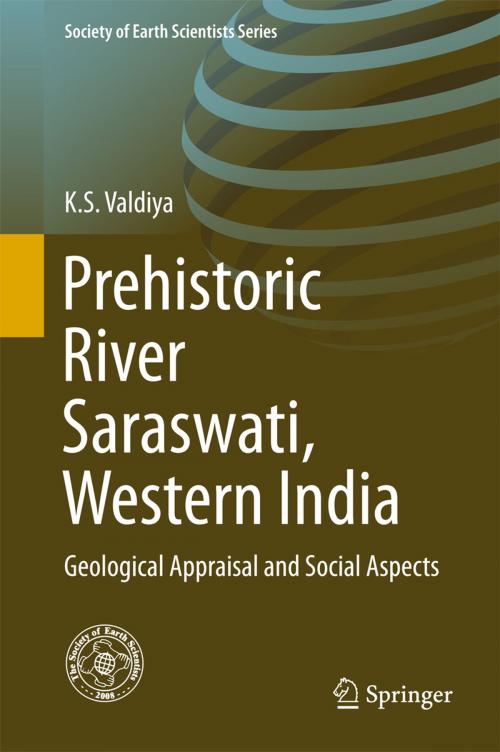Prehistoric River Saraswati, Western India
Geological Appraisal and Social Aspects
Nonfiction, Science & Nature, Science, Earth Sciences, Geology| Author: | K.S. Valdiya | ISBN: | 9783319442242 |
| Publisher: | Springer International Publishing | Publication: | September 10, 2016 |
| Imprint: | Springer | Language: | English |
| Author: | K.S. Valdiya |
| ISBN: | 9783319442242 |
| Publisher: | Springer International Publishing |
| Publication: | September 10, 2016 |
| Imprint: | Springer |
| Language: | English |
This book portrays the Himalayan-born River Saraswati, a legendary river that was the lifeline of a progressive and vibrant society for more than three thousand years. Written in simple language and richly illustrated, it highlights the events that resulted in the robbing of the Saraswati of its water and the end of a wonderful culture. The author weaves a geological narrative out of a mass of data generated by explorers, archaeologists, sedimentologists, geohydrologist, seismologists and remote-sensing specialists. The story explains how a great Himalayan river disappeared and how the Harappan Civilization vanished from the banks of the river Saraswati more than three and half thousand years ago in the wake of tectonic upheavals in the foothills of the Himalaya at a time when the rainfall had drastically declined. And it reveals that nowadays the Saraswati is an extraordinary wide water-less channel coursing through the vast but dry floodplain in western India.
This book portrays the Himalayan-born River Saraswati, a legendary river that was the lifeline of a progressive and vibrant society for more than three thousand years. Written in simple language and richly illustrated, it highlights the events that resulted in the robbing of the Saraswati of its water and the end of a wonderful culture. The author weaves a geological narrative out of a mass of data generated by explorers, archaeologists, sedimentologists, geohydrologist, seismologists and remote-sensing specialists. The story explains how a great Himalayan river disappeared and how the Harappan Civilization vanished from the banks of the river Saraswati more than three and half thousand years ago in the wake of tectonic upheavals in the foothills of the Himalaya at a time when the rainfall had drastically declined. And it reveals that nowadays the Saraswati is an extraordinary wide water-less channel coursing through the vast but dry floodplain in western India.















